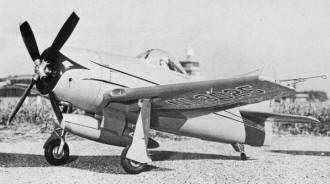Dave
Platt - aka "Mr. Scale" - is one of the world's most accomplished scale
model airplane builders and flyers. He somehow manages to turn out magnificently
detailed scale models year after year. If you haven't seen his "Platt's Laws of Scale Modeling,"
derived from his decades of experience, you'll want to do so. Dave was born in London,
England, in 1934 and emigrated to America in 1967. He has built and flown his scale
models in the realms of free flight, control line, and radio control, using internal
combustion engines with propellers, ducted fans, and turbine jets for propulsion.
There might be someone somewhere equally qualified to comment on scale airplane
modeling, but none more qualified. When this "Find the Scale Wingspan & Area"
article appeared in a 1969 issue of American Aircraft Modeler magazine,
slide rules were the de rigueur method of performing multiplication and divisions
when many calculations were required - like when designing a scale airplane model.
Mr. Platt's dimension conversion multiplication table helped to ease the pain.Find the Area - Pain-relieving scheme for scale modelers gives
wing span and area in a flash!

Highly detailed control-line model of Al Williams' Gulfhawk was
made by Warren MacZura. Weighs 4 3/4 lbs., spans 36", in 1"-to-1' scale. Powered
by throttled-35 engine. Wing area and size are about as small as practical without
being a flying bomb. This plane won the first World Championships in control-line
scale, was featured in American Aircraft Modeler Annual 1968.
By Dave Platt
The first and most heart-searching problem that a scale modeler encounters when
engaging upon a new project is the apparently simple one of choosing his subject.
I'm sure we all know from personal experience exactly how "simple" a job this is.
I cannot give a fool-proof method of overcoming this problem. The fact is that I
have just as much trouble as anyone else in this regard. But what I can do is help
a little by saving some time and fruitless work in the step immediately following
the choice of subject - the critical matter of what size or scale the model shall
be built to. Bearing on this are such factors as airfoils, all-up weight, amount
of detailing, and type of aircraft.
The most vital dimension of any model is its wing area. Wing span, of itself,
does not matter but results inevitably from the area chosen. Having chosen a suitable
wing area bracket for our model, based upon the intended purpose or class of scale
model we want, the specific question is: To what scale must the model be built to
give an area closest to our requirements? The table will give the answer to this
important question in a few moments, and without any drawing or measurement of the
scale plan. We need to know only two figures: the wing span and the wing area of
our subject full-size airplane.
Table for Finding the Wing Area and
Wing Span of
a Projected Scale Model

To Find Area: Multiply area of real plane (in
sq. feet) by area factor in column D. Answer is area of model (in sq. inches).
To Find Span: Multiply span of real plane (in
feet) by scale in column A. Answer is span of model in inches.
Let's take a couple of examples to show how the table works. The simplicity of
the scheme will be evident.
Case 1: Joe decides to make a P-47 Thunderbolt for full-house propo R/C. A suitable
wing area for this model will fall in the 600-750 sq. ins. bracket. The wing span
and area of the P-47 are 40' 9" and 300 sq. ft. respectively. By looking at the
table, we find that the area of a 1 1/2" = 1' (1/8 full-size) model will be 300
x 2.25 = 675 sq. ins. Not bad for a first attempt! Span will be 40.75 x 1.5 = 61
1/8". For this model, Joe can either enlarge a 1/72 drawing by 9 or 1 1/48 drawing
by 6, as the table shows.
Case 2: Bill wants a F.W. 190 for his 45 engine to fly C/L. A ball-park area
here would be around 300 sq. ins. From the area of the full-size airplane (197 sq.
ft.), Bill sees that a good scale will be 1 1/4" = 1', giving a wing area of 197
x 1.56 = 307 sq. ins. Span here gets to be 34.5 (span in feet of real F.W.) x 1.25
= 43 1/8". For an even enlargement of a scale drawing, the table tells Bill that
he'll need a 1/48 scale drawing to multiply by 5.
So, we see that given this table, a whole lot of measuring and drawing of unsuitable
size plans is saved. The scope of the table goes from 1" x 1' to 2" = 1' which is
where 99 out of 100 scale models fall, and is graduated in many steps to allow very
accurate area-requirements to be met almost exactly.
Finally, I wonder if I can hope that some modeler (much cleverer than me) will
give us a simple table for choosing our subject!
Posted May 29, 2024
|